Part 10, Chapter 5: Manual Exhibit 10-5-A
Indian Health Service
Cybersecurity and Privacy Control Parameter Definitions
Configuration Management (CM) Controls
The National Institute of Standards and Technology (NIST) Special Publication (SP) 800-53, Revision 4, "NIST Security and Privacy Controls for Federal Information Systems and Organizations," provides a catalog of security and privacy controls and control enhancements that must be implemented for Federal information systems.
Many of these controls and enhancements include specific parameters that must be defined by Federal agencies. The Department of Health and Human Services (HHS) has defined roughly 50 percent of these parameters in the HHS OCIO Policy for Information Systems Security and Privacy. HHS directs Operating Divisions (OpDivs) to inherit these parameters and develop their own definitions for the remaining 50 percent. This specific exhibit defines the Configuration Management (CM) family controls.
The IHS Cybersecurity and Privacy Control Parameter Definitions specifies the IHS-defined security control parameters in compliance with HHS direction. The Federal Risk and Authorization Management Program (FedRAMP) parameters that are specifically applicable to cloud systems are located at https://www.fedramp.gov/documents/.
The NIST SP 800-53, Rev 4 CM family controls that were withdrawn or were not selected by HHS are not included in the following table. NIST 800-53, Rev 4 is located at https://nvlpubs.nist.gov/nistpubs/SpecialPublications/NIST.SP.800-53r4.pdf.
Note: Some minimum security controls are specified according to the system’s assigned security category (Low, Moderate, High). These varied assignment specifications are identified under the control description with brackets and asterisk: [Assignment*]. Refer to the category columns for specification details.
| Control ID | Control Title | Control Description | IHS Minimum Requirement by System Category | ||
|
Low |
Moderate | High | |||
Configuration Management (CM) |
|||||
|
CM-1 |
Configuration Management Policy and Procedures |
The organization:
|
Selected |
Selected |
Selected |
|
CM-2 |
Baseline Configuration |
The organization develops, documents, and maintains under configuration control, a current baseline configuration of the information system.
Note: Baseline configurations are required for all systems. Baseline configurations include information about system components (e.g., standard software packages installed on workstations, notebook computers, servers, network components, or mobile devices; current version numbers and patch information on operating systems and applications; and configuration settings/parameters), network topology, and the logical placement of those components within the system architecture. |
Selected |
Selected |
Selected |
|
CM-2 |
Reviews and Updates |
The organization reviews and updates the baseline configuration of the information system:
|
Not Selected |
Selected
|
Selected
|
|
CM-2 |
Automation Support for Accuracy/ Currency | The organization employs automated mechanisms to maintain an up-to-date, complete, accurate, and readily available baseline configuration of the information system. |
Not Selected |
Not Selected |
Selected |
|
CM-2 |
Retention of Previous Configurations | The organization retains previous versions of the baseline configuration, as deemed necessary by the IHS, to support rollback. |
Not Selected |
Selected |
Selected |
|
CM-2 c.e.7 |
Configure Systems, Components, or Devices for High-Risk Areas |
The organization:
Note: In cases in which laptop encryption cannot be utilized to secure sensitive data (e.g., prohibition by United States export controls, travel to a country designated as high-risk per the HHS National Security Information Manual, potential danger, inability for personnel to perform work), a laptop that contains no sensitive information should be utilized. Refer to and follow the Office of Security and Strategic Information guidelines for foreign travel. |
Not Selected |
Selected |
Selected |
|
CM-3 |
Configuration Change Control |
The organization:
Note: Change control boards should include an Information Systems Security Officer (ISSO) or their representative. |
Not Selected |
Selected |
Selected |
|
CM-3 |
Automated Document/ Notification/ Prohibition of Changes |
The organization employs automated mechanisms to:
|
Not Selected |
Not Selected |
Selected |
|
CM-3 |
Test/Validate/ Document Changes | The organization tests, validates, and documents changes to the information system before implementing the changes on the operational system. |
Not Selected |
Selected |
Selected |
|
CM-4 |
Security Impact Analysis | The organization analyzes changes to the information system to determine potential security impacts prior to change implementation. System changes will be tested in a development environment prior to implementation, and major or critical changes will be validated by the vendor, as appropriate. |
Selected |
Selected |
Selected |
|
CM-4 |
Separate Test Environments | The organization analyzes changes to the information system in a separate test environment before implementation in an operational environment, looking for security impacts due to flaws, weaknesses, incompatibility, or intentional malice. |
Not Selected |
Not Selected |
Selected |
|
CM-5 |
Access Restrictions for Change | The organization defines, documents, approves, and enforces physical and logical access restrictions associated with changes to the information system. |
Not Selected |
Selected |
Selected |
|
CM-5 |
Automated Access Enforcement/ Auditing | The information system enforces access restrictions and supports auditing of the enforcement actions. |
Not Selected |
Not Selected |
Selected |
|
CM-5 |
Review System Changes | The organization reviews information system changes weekly and when significant changes occur, as defined by IHS, to determine whether unauthorized changes have occurred. |
Not Selected |
Not Selected |
Selected |
|
CM-5 |
Signed Components | The information system prevents the installation of software and firmware components, as defined by the IHS, without verification that the component has been digitally signed using a certificate that is recognized and approved by the Agency. |
Not Selected |
Not Selected |
Selected |
|
CM-6 |
Configuration Settings |
Per HHS Minimum Security Configuration Standards for Departmental Operating Systems and Applications, other configuration-related Department memoranda and standards, and any applicable IHS policy, the organization:
Note: Apple and Samsung devices must be configured through the Apple Device Enrollment Program and Samsung Knox platforms, the mobile security solutions provided by the respective mobile device manufacturers. Please see IHM, Part 8, Chapter 4 "Capital Planning & Investment Control" for Apple device purchase requirements to ensure the devices are properly configured and managed. |
Selected |
Selected |
Selected |
|
CM-6 |
Automated Central Management/ Application/ Verification | The organization employs automated mechanisms to centrally manage, apply, and verify configuration settings for information system components, as defined in the HHS Minimum Security Configuration Standards for Departmental Operating Systems and Applications. Due to the need to support, protect, and audit geographically dispersed endpoints, all IHS workstations must implement Windows operating systems (OSs). The Linux OS is not authorized for use on IHS workstations. |
Not Selected |
Not Selected |
Selected |
|
CM-6 |
Respond to Unauthorized Changes | The organization employs appropriate security safeguards (e.g., alerting designated organizational personnel including at minimum the System Owner, restoring established configuration setting, and halting affected information system processing, as defined by IHS) to respond to unauthorized changes to information system components as defined by the information system. |
Not Selected |
Not Selected |
Selected |
|
CM-7 |
Least Functionality |
The organization:
|
Selected |
Selected |
Selected |
|
CM-7 |
Periodic Review |
The organization:
|
Not Selected |
Selected |
Selected |
|
CM-7 |
Prevent Program Execution | The information system prevents program execution in accordance with IHS-defined policies regarding software program use and restrictions; and, when necessary, the rules authorizing the terms and conditions of software program use. |
Not Selected |
Selected |
Selected |
|
CM-7 |
Unauthorized Software/ Blacklisting |
The organization:
Note: Unauthorized software could include: software that is no longer supported by its vendor, compilers, known hacking tools, agents that support external file storage or data transmission, or unapproved VPN (virtual private network) clients. |
Not Selected |
Selected |
Not Selected |
|
CM-7 |
Authorized Software/ Whitelisting |
The organization:
|
Not Selected |
Not Selected |
Selected |
|
CM-8 |
Information System Component Inventory |
The organization:
|
Selected
|
Selected
|
Selected
|
|
CM-8 |
Updates During Installations/ Removals | The organization updates the inventory of information system components as an integral part of component installations, removals, and information system updates. |
Not Selected |
Selected |
Selected |
|
CM-8 |
Automated Maintenance | The organization employs automated mechanisms to help maintain an up-to-date, complete and accurate, readily available inventory of information system components. |
Not Selected |
Not Selected |
Selected |
|
CM-8 |
Automated Unauthorized Component Detection |
The organization:
|
Not Selected |
Selected
*Assignment: Select one or more of the following:
|
Selected
*Assignment: Select one or more of the following:
|
|
CM-8 |
Accountability Information | In the information system component inventory, the organization identifies by position and role the individuals responsible/accountable for administering those components. |
Not Selected |
Not Selected |
Selected |
|
CM-8 |
No Duplicate Accounting of Components | The organization verifies that all components within the authorization boundary of the information system are not duplicated in other information system component inventories. |
Not Selected |
Selected |
Selected |
|
CM-9 |
Configuration Management Plan |
The organization develops, documents, and implements a configuration management plan for the information system that:
Note: Organizations must also ensure that personnel with configuration management responsibilities are trained on IHS or system applicable configuration management processes. |
Not Selected |
Selected |
Selected |
|
CM-10 |
Software Usage Restrictions |
The organization:
|
Selected |
Selected |
Selected |
|
CM-11 |
User-Installed Software |
The organization:
Note: Policy enforcement methods include procedural methods (e.g., periodic examination of user accounts), automated methods (e.g., configuration settings implemented on organizational information systems), collection of application inventory controls, or a combination of these methods. |
Selected |
Selected |
Selected |
Appendix A: System Component Inventory Requirements
As defined in the CM control family, specifically CM-8, organizations must develop and document a component inventory for all information systems. The inventory must include all components within the authorization boundary of the information system and be at the level of granularity deemed necessary for tracking and reporting. At a minimum, the inventory record for each system component must include the following information:
- Unique identifier and/or serial number;
- System name of which the component is a part;
- Type of system component (e.g., server, desktop, network device, storage, application);
- Manufacturer/model;
- Operating system type and version/service pack level;
- Presence of virtual machines;
- Application software version/license information;
- Physical location (e.g., building/room number);
- Logical location (e.g., IP [Internet protocol] address);
- Media Access Control (MAC) address;
- Owner;
- Operational status; and
- Primary and secondary administrators.


